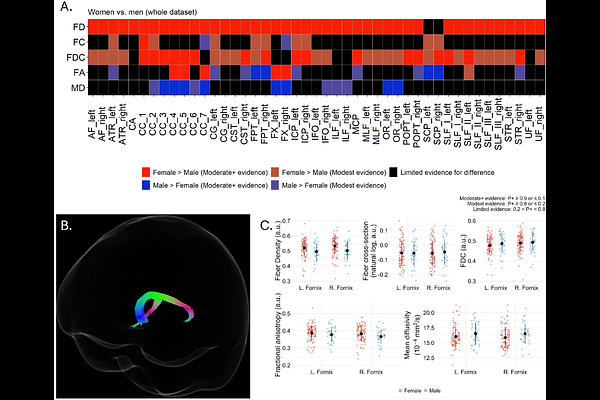White matter micro- and macrostructural properties in midlife individuals at risk for Alzheimer's disease: Associations with sex and menopausal status

White matter micro- and macrostructural properties in midlife individuals at risk for Alzheimer's disease: Associations with sex and menopausal status
Raikes, A. C.; Dyke, J. P.; Nerattini, M.; Boneu, C.; Ajila, T.; Fauci, F.; Battista, M.; Pahlajani, S.; Williams, S.; Brinton, R. D.; Mosconi, L.
AbstractWomen are at greater lifetime risk for Alzheimer\'s disease (AD), potentially due to midlife fractional anisotropy (FA) and lower mean diffusivity in fornix and corpus callosum, indicating more densely organized white matter. Perimenopausal women were the exception, with white matter profiles closely resembling those of men. Perimenopausal women exhibited minimal or absent fiber cross-section and FDC sex differences and a reversal of the fornix FA advantage observed in pre- and postmenopausal women. These cross-sectional results are consistent with sex differences in white matter organization. Importantly, the perimenopause emerges as a critical window of neural reorganization in the female midlife aging brain characterized by temporary convergence toward male-like white matter organization. Longitudinal analyses are key to identifying women who do or do not revert to a premenopausal profile, which may inform AD risk.